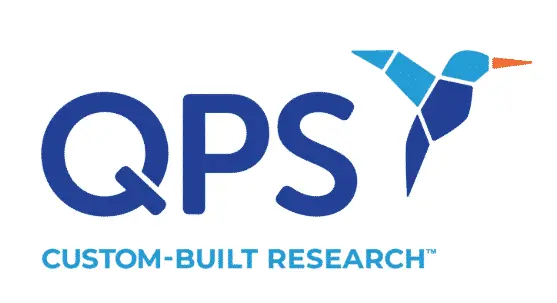Introduction
As global obesity rates continue to rise, the search for effective treatments is more critical than ever. Obesity is associated with an increased risk for diabetes, heart disease, stroke, some cancers and many other serious physical and mental health consequences, but a pivotal anti-obesity shift may be underway. New therapies emerging from ongoing clinical trials are poised to start turning the tide against escalating obesity rates. These innovative drugs promise not just weight management, but also wide-ranging health benefits, including improvements in cardiovascular and metabolic health.
In recent decades, the global health landscape has been increasingly dominated by the rising epidemic of obesity, a critical issue linked to numerous chronic diseases such as diabetes, heart disease, and stroke. With obesity rates soaring, anti obesity medications are emerging as effective solutions, with substantial success not only in weight management but also in enhancing overall health outcomes. This white paper will examine the current state of the global obesity epidemic, the varying types of anti obesity medications available, and how existing and emerging medications provide additional benefits beyond weight management. Studies show that anti-obesity medicines have potent effects on an array of related comorbidities and may offer new tools for improving healthcare.
UNDERSTANDING THE CURRENT GLOBAL BURDEN OF OBESITY
Statistics from the World Health Organization (WHO) show that obesity and overweight are escalating health challenges worldwide and are associated with leading causes of death. As of 2022, one in eight people globally was living with obesity.1 The global state of obesity has undergone significant changes over recent decades, with adult obesity rates more than doubling since 1990. Moreover, the prevalence among children and adolescents has quadrupled, increasing from 8% to 20% during the same time.1
In adults, the WHO defines overweight and obesity based on body mass index (BMI), a measure of weight for height [weight (kg)/height² (m²)]. A BMI greater than or equal to 25 is considered overweight, and a BMI greater than or equal to 30 is considered obese. For children, weight and height are used to determine overweight and obesity, but in comparison to the WHO Child Growth Standards median.
By the WHO’s definition, 2.5 billion adults (43% of the adult population) were overweight in 2022, including 890 million people (16%) living with obesity. More than 390 million children and adolescents aged 5 to 19 years were overweight, including 160 million living with obesity.1
These statistics highlight the pervasive nature of obesity across different countries and age groups. Obesity not only has substantial health implications, including increased risk of diseases such as Type 2 diabetes, cardiovascular diseases, and certain cancers, but also poses meaningful economic burdens globally.
IMPACTS OF OVERWEIGHT AND OBESITY
The effects of obesity on health, mortality, and the economy are profound and far-reaching. The following health risks have been linked to overweight and obesity: Type 2 diabetes, high blood pressure, heart disease, stroke, metabolic syndrome, fatty liver disease, some cancers, breathing problems, osteoarthritis, gout, diseases of the gallbladder and pancreas, kidney disease, pregnancy problems, fertility problems, sexual function problems, mental health problems and increased risk of death.2 Together, these conditions led to an estimated 5 million deaths in 2019.1
Overweight and obesity during childhood and adolescence affect psychosocial well-being, school performance and quality of life through stigma, discrimination and bullying. Moreover, these early-life challenges often perpetuate a cycle of health risks as children and adolescents with obesity are around five times more likely to become adults with obesity, compared to non-obese peers.3
Economically, the burden of obesity is significant, with projections estimating global costs to reach $3 trillion annually by 2030 and exceed $18 trillion by 2060 if current trends continue.1
Additionally, the rising prevalence of obesity in low- and middle-income countries signifies a global shift in the epidemic and highlights that this growing threat no longer affects only high-income countries.
CAUSES OF OVERWEIGHT AND OBESITY
Obesity is a complex chronic disease whose etiology stems from a variety of factors, chief among them being the imbalance between energy intake from diet and energy expended through physical activity. However, the roots of obesity extend to multifactorial influences such as obesogenic environments, psychosocial factors and genetic variants. Environments marked by limited access to healthy, affordable food options and inadequate infrastructure for physical activity, coupled with a lack of access to effective medical interventions, significantly contribute to the obesity epidemic.1
THE CURRENT LANDSCAPE OF OBESITY TREATMENT
Research investigating pharmaceutical interventions to reduce overweight and obesity has resulted in several approved medications with varying approaches. The following list describes the six major classes of these medications according to their mechanisms of action.
- Appetite suppression: Medications in this category work by reducing hunger or inducing a feeling of fullness sooner. This effect is achieved through various mechanisms, including the mimicry of hormones signaling satiety to the brain or by acting directly on the brain’s appetite control centers.
- Reduced fat absorption: Lipase inhibitors prevent the absorption of fat from consumed foods. They operate in the gut to inhibit the enzyme responsible for breaking down fats, thus reducing the amount of fat absorbed by the body.
- Metabolism boost: Medications in this class are stimulants that block the brain’s hunger signals, increase the sensation of fullness and may also elevate resting metabolism, leading to a higher rate of calorie burning while at rest.
- Combination approaches: Some medications combine two active ingredients to promote a synergistic effect on weight loss by suppressing appetite and enhancing feelings of fullness.
- Hormone mimicking: Glucagon-like peptide-1 (GLP-1) receptor agonists work by mimicking the action of the hormone GLP-1. This enhances glucose-dependent insulin secretion, decreases inappropriate glucagon secretion, and slows gastric emptying to reduce appetite and food intake, thereby improving glycemic control and promoting weight loss.
- Treatment for obesity associated with rare genetic disease: This medication is only approved for people with specific rare genetic conditions leading to obesity. It may lower appetite and increase the sensation of fullness but does not address the genetic condition directly.
The Obesity Pipeline: Phase III Assets

CLINICAL TRIALS AND EMERGING ANTI-OBESITY MEDICATIONS
The portfolio of anti-obesity drugs is evolving rapidly, propelled by a deeper understanding of the complex mechanisms underlying weight gain and metabolism. Ongoing Phase III clinical trials (see chart) are investigating the most promising new anti-obesity drugs, each representing a potential contribution to weight management. From GLP-1 receptor agonists to novel molecules targeting entirely new pathways, the drugs currently under investigation reflect a paradigm shift and could significantly impact not only obesity but also a range of related health conditions.
BEYOND WEIGHT LOSS: THE MULTIDIMENSIONAL BENEFITS OF ANTI-OBESITY TREATMENTS
The drug candidates and trials represented in the chart underscore not just the potential for emerging solutions for substantial weight loss but also the far-reaching implications these anti-obesity drugs have on overall health outcomes. It is becoming increasingly evident that the benefits of these interventions extend well beyond weight reduction and represent important advances toward managing and preventing a range of health conditions.
As described below, emerging anti-obesity drugs not only reduce body weight but also improve metabolic markers, enhance insulin sensitivity and lower the risk of cardiovascular disease, among other benefits. As a group, these approved and emerging medications are redefining the therapeutic approach to obesity and its associated comorbidities.
- Glycemic Control: Type 2 diabetes is marked by high glucose levels due to insulin resistance and impaired insulin production. Obesity is often linked to developing insulin resistance. GLP-1 agonists stimulate insulin production, helping to control glucose levels. For example, research shows that the GLP-1 agonist liraglutide, delivered with lifestyle modification counseling, is associated with weight loss and glycemic control among study participants with overweight or obesity who do not have Type 2 diabetes and a decreased risk of major cardiovascular events (MACE) among patients with Type 2 diabetes.4,5
- Cardiovascular and Metabolic Health: In addition to facilitating weight loss, research shows that the GLP-1 agonist semaglutide, compared to a placebo, is effective in improving cardiometabolic risk factors and physical functioning among study participants with overweight or obesity.6 The study results showed improvements in control of blood sugar levels, cholesterol and blood pressure, which are critical in reducing the risk of heart disease. Metformin, which controls high blood sugar in people with Type 2 diabetes, has also been shown to have significant positive effects on cardiovascular health in both human and animal studies.7 In people with diabetes, metformin helps improve heart-related health outcomes, although the benefits vary based on individual patient characteristics. The mechanisms at work involve decreasing cell death in endothelial cells, reducing oxidative stress, reducing inflammation, enhancing mitochondrial function and managing fat levels in animals with heart disease. Research has also shown that the lipase inhibitor orlistat has benefits beyond weight loss, including improvements in total cholesterol, low-density lipoprotein cholesterol, triglycerides, glucose tolerance, waist circumference and blood pressure.8
- Liver Disease: Tirzepatide, a gastric inhibitory polypeptide (GIP) agonist/GLP-1 agonist approved for obesity and diabetes, has shown promise in clinical trials as a treatment for nonalcoholic steatohepatitis (NASH), also known as metabolic dysfunction-associated steatohepatitis (MASH), a form of fatty liver disease.9 After 52 weeks, significantly more study participants who received the drug cleared the disease with no progression of liver scarring or fibrosis compared to those who took a placebo.
- Depression: Depression commonly co-occurs with obesity and is often left untreated. Bupropion, an effective antidepressant, is part of an approved medication for obesity in combination with naltrexone, an anti-addiction drug. Research suggests that this drug combination is effective in helping people co-manage obesity and depression.10
- Polycystic Ovary Syndrome: Metformin is also prescribed for managing gestational diabetes and for treating polycystic ovary syndrome (PCOS). Lowering insulin and blood sugar may improve ovulation and fertility, even among people who do not have diabetes.
- Inflammation: Studies in mice with diet-induced obesity have shown that a new class of drugs being developed to inhibit inflammation not only facilitated significant weight loss but also reduced markers of cardiovascular inflammation. The drugs inhibit the NOD-, LRR- and pyrin domain-containing protein 3 (NLRP3) inflammasome to treat diseases driven by chronic inflammation.11 These findings suggest a dual approach to combating obesity and heart disease by targeting inflammation. One promising drug in this class, NT-0796, is advancing into Phase Ib/IIa clinical trials to explore its cardiometabolic benefits in obese participants. This approach offers a potential alternative for patients who cannot tolerate current GLP-1 receptor agonists.
These are just some examples that illustrate the broad positive effects that approved and emerging anti-obesity medications can have on various aspects of health beyond weight management. As clinical research into these benefits continues, the range of positive health outcomes associated with anti-obesity drugs is expected to expand further. QPS is a proven partner in supporting these essential clinical trials.
QPS IS AT THE FOREFRONT OF OBESITY RESEARCH
Based on the significant potential of anti-obesity medications, the market is expected to grow at a compound annual growth rate of 21% by 2034.12 As this market and the clinical research landscape evolves, choosing the right contract research organization (CRO) is more critical than ever.
At QPS, our team has the knowledge and expertise to advance anti-obesity pharmaceutical products through preclinical and clinical trials. We are a full-service CRO and have completed several studies of anti-obesity medications in recent years. We offer comprehensive facilities capable of supporting both inpatient and outpatient studies, equipped with specialized staff and state-of-the-art technology.

Our People
Our clinical trial experts include:
- Clinical research personnel: Dedicated physicians and nurse practitioners offer deep experience in proper trial enrollment and oversight.
- In-house principal investigators (PIs): QPS hasmultiple board certified in-house physicians, including physicians who are board certified in obesity medicine. These experienced leaders ensure all study procedures meet the highest standards of efficiency and efficacy. Their involvement spans the full spectrum of the clinical trial, from protocol development to the detailed oversight of patient screening and study close-out. Our PIs also bring their significant expertise to bear on adverse event management, enhancing data collection and participant retention — critical factors in clinical trial success.
- Clinical operations staff: These team members form the backbone of our trial management, with 100% of the team trained in Good Clinical Practice (GCP). Their training is comprehensive, pragmatic and tailored to each study design. Clinical staff members have extensive pharmacological expertise, covering the entire clinical trial spectrum from first-in-human to proof-of-concept studies.
- Specialized pharmacists: From evaluating study feasibility to managing randomization processes, our pharmacists play a pivotal role in the trial process. Their adherence to protocols ensures the highest standards in intravenous, subcutaneous, and oral drug storage and dispensation.
- In-house nutritionists and dietitians: These professionals are experienced and available to customize dietary plans to meet specific study requirements. They bring a deep understanding of the parameters used in complex metabolic studies and are proficient in using Harris-Benedict equations to establish baseline caloric levels for study meals.
- Inflammation: Studies in mice with diet-induced obesity have shown that a new class of drugs being developed to inhibit inflammation not only facilitated significant weight loss but also reduced markers of cardiovascular inflammation. The drugs inhibit the NOD-, LRR- and pyrin domain-containing protein 3 (NLRP3) inflammasome to treat diseases driven by chronic inflammation.11 These findings suggest a dual approach to combating obesity and heart disease by targeting inflammation. One promising drug in this class, NT-0796, is advancing into Phase Ib/IIa clinical trials to explore its cardiometabolic benefits in obese participants. This approach offers a potential alternative for patients who cannot tolerate current GLP-1 receptor agonists.
PATIENT ACCESS AND RECRUITMENT: THE QPS ADVANTAGE
Recognizing the complexities of patient recruitment for obesity-related clinical trials, QPS has developed a robust internal recruitment team. This rigorously trained group is deeply engaged in pre-screening efforts, ensuring we collect pertinent patient data and exceed our enrollment targets. We have built a considerable patient database with thousands of active volunteers across various demographics and health statuses.
Conclusion
Obesity remains a complex condition with vast health implications that touch every facet of modern healthcare. Yet, new and existing medications are showing significant potential to transform lives. At QPS, we understand that robust clinical research is imperative to unlock the full breadth of positive health outcomes that these treatments may yield.
As we continue to harness our extensive experience and state-of-the-art facilities, our mission is clear: to advance clinical trials that explore every possibility and maximize the therapeutic impact of anti-obesity drugs. Our dedicated team of board certified physicians, clinical research personnel, specialized pharmacists, in-house nutritionists, and dietitians are committed to the highest standards of trial conduct, from patient enrollment to study completion.
Our proven success in the field underlines our readiness to be your partner in innovation. We encourage you to visit our website to learn more about our full range of support services for clinical trial sponsors.
REFERENCES
1. Obesity and Overweight. World Health Organization, 1 March 2024, World Health Organization, www.who.int/news-room/fact-sheets/detail/obesity-and-overweight. Accessed 19 April 2024.
2. Health Risks of Overweight and Obesity. National Institute of Diabetes and Digestive and Kidney Diseases (NIDDK), May 2023, U.S. Department of Health and Human Services, www.niddk.nih.gov/health-information/weight-management/adult-overweight-obesity/health-risks. Accessed 19 April
2024.
3. Simmonds M, Llewellyn A, Owen CG, Woolacott N. Predicting adult obesity from childhood obesity: a systematic review and meta-analysis. Obesity Reviews, 2016 Feb;17(2):95-107. doi: 10.1111/obr.12334. Epub 2015 Dec 23. PMID: 26696565. Accessed 19 April 2024.
4. Pi-Sunyer, Xavier, et al. A Randomized, Controlled trial of 3.0 mg of liraglutide in weight management. New England Journal of Medicine, vol. 373, 2015, pp. 11-22, www.nejm.org/doi/10.1056/NEJMoa1411892. Accessed 19 April 2024.
5. Duan, Chun-Mei, et al. Cardiovascular outcomes of liraglutide in patients with Type 2 diabetes: a systematic review and meta-analysis. Medicine (Baltimore), vol. 98, no. 46, Nov. 2019, article e17860, doi:10.1097/MD.0000000000017860. Accessed 19 April 2024.
6. Wilding, John P.H., et al. Once-weekly semaglutide in adults with overweight or obesity. New England Journal of Medicine, vol. 384, no. 11, 2021, pp. 989-1002, www.nejm.org/doi/10.1056/NEJMoa2032183. Accessed 19 April 2024.
7. Bu, Yizhi, et al. Protective effects of metformin in various cardiovascular diseases: clinical evidence and AMPK-dependent mechanisms. Journal of Cellular and Molecular Medicine, vol. 26, no. 19, 2022, pp. 4886–4903, doi:10.1111/jcmm.17519. Accessed 19 April 2024.
8. Zavoral, James H. Treatment with orlistat reduces cardiovascular risk in obese patients. Journal of Hypertension, vol. 16, no. 12, Dec. 1998, pp. 2013-2017. DOI: 10.1097/00004872-199816121-00024. Accessed 19 April 2024.
9. Lilly reports strong fourth quarter 2023 financial results and updates 2024 guidance. Eli Lilly and Company, Eli Lilly and Company, investor.lilly.com/
news-releases/news-release-details/lilly-reports-strong-fourth-quarter-2023-financial-results-and. Accessed 19 April 2024.
10. McElroy, Susan L., et al. Naltrexone/bupropion combination therapy in overweight or obese patients with major depressive disorder: results of a pilot study. The Primary Care Companion for CNS Disorders, vol. 15, no. 3, 2013, article PCC.12m01494, doi:10.4088/PCC.12m01494. Accessed 19 April 2024.
11. Thornton, Peter, et al. Reversal of high fat diet-induced obesity, systemic inflammation and astrogliosis by the NLRP3 inflammasome inhibitors NT-0249 and NT-0796. Journal of Pharmacology and Experimental Therapeutics, 9 Feb. 2024, JPET-AR-2023-002013, doi:10.1124/jpet.123.002013. Accessed 19 April 2024.
12. Anti-obesity drugs market is estimated to grow at a CAGR of 21.2% by 2034: Visiongain. GlobeNewswire, 12 Apr. 2024, www.globenewswire.com/news-
release/2024/04/12/2862297/0/en/Anti-obesity-Drugs-market-is-estimated-to-grow-at-a-CAGR-of-21-2-by-2034-Visiongain.html. Accessed 19 April 2024.





